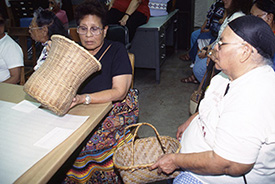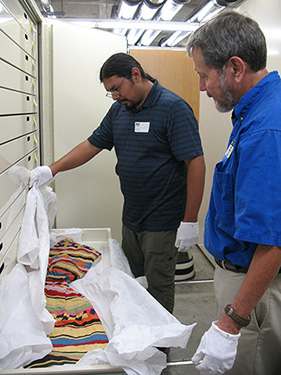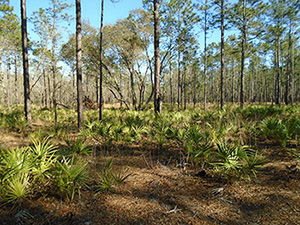Cultural Revitilization

Our people have been perfecting their skill in basketry for centuries, but unfortunately, during the past few generations, palmetto baskets are quickly becoming a lost art. By the time that I came along, my great grandmother, Juanita Osceola, and her sisters, were no longer making them.
—Pedro Zepeda, Panther Clan
Seminole tribal members have sought to revitalize the tradition of making palmetto baskets for the last few decades. Arts and crafts programs sponsored by cultural departments teach both young and old how to select the proper stems for harvest, as well as the process of stripping, drying, and fashioning the stems into a plaited basket.

The traditional way of learning basketry is by observation. This includes watching a basket maker at work or examining a basket that has already been made. Seminole tribal members have visited the Florida Museum to examine objects for insight into past techniques, including baskets. These visits aid the museum as well because knowledge offered by tribal members helps better our understanding of the collection.
Environmental Concerns
Keeping traditions alive can be difficult if they require materials that are vulnerable to depletion or are under threat. The materials used to make Seminole and Miccosukee baskets are natural and so resource scarcity is a concern.

Commercial and residential land development in South Florida continues to encroach into areas traditionally used for gathering materials such as palmetto stems and husks for making baskets and dolls. Land development and resource competition threatens the availability of sweetgrass as well: the Everglades are too watery, so sweetgrass is not found along the Tamiami Trail where many Seminole and Miccosukee live today. Artists living in this region have to travel great distances to find their supply of sweetgrass. Competition with other basket makers who gather material in the same areas each year is a growing concern for many artists.